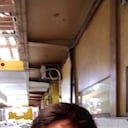What is the recreational pastime of exploring wild cave systems called in the Americas?
Caving – also known as spelunking in the United States and Canada and potholing in the United Kingdom and Ireland – is the recreational pastime of exploring wild cave systems. In contrast, speleology is the scientific study of caves and the cave environment.
The challenges involved in caving vary according to the cave being visited; in addition to the total absence of light beyond the entrance, negotiating pitches, squeezes, and water hazards can be difficult.
Clay Perry, an American caver of the 1940s, wrote about a group of men and boys who explored and studied caves throughout New England. This group referred to themselves as spelunkers, a term derived from the Latin "spēlunca" ("cave, cavern, den"), itself from the Greek σπῆλυγξ spēlynks ("cave"). This is regarded as the first use of the word in the Americas.
Hard hats are worn to protect the head from bumps and falling rocks. The caver's primary light source is usually mounted on the helmet in order to keep the hands free. Electric LED lights are most common. Many cavers carry two or more sources of light – one as primary and the others as backup in case the first fails.
More Info:
en.wikipedia.org




